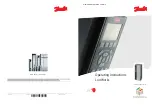
CFETF10xx-205
6
24-hour Technical Support: 1-800-260-1312 International: 00-1-952-941-7600
[email protected] -- Click the “Transition Now” link for a live Web chat.
11
Operation
Status LEDs
The CFETF10xx-205 media converter is designed to operate
without user intervention. Use the status LEDs to monitor the
media converter operation in the network.
PWR
On
Connection to external power.
LKF
On
The fiber link has been established.
LKC
On
The copper link has been established.
RXF
Flashing
The fiber link is receiving data.
RXC
Flashing
The copper link is receiving data.
Product Features
Auto-Negotiation
The Auto-Negotiation feature allows the CFETF10xx-205 media converter to
automatically configure itself to achieve the best possible mode of operation
over a link. The media converter broadcasts its speed
(100 Mb/s)
and duplex
capabilities
(full or half)
to the other devices and negotiates the best mode of
operation. Auto-Negotiation allows quick and easy installation because the
optimal link is established automatically. No user intervention is required.
A scenario where the media converter is linked to a non-negotiating device,
disable Auto-Negotiation. In this instance, the mode of operation will drop to
the least common denominator between the two devices
(e.g., 100 Mb/s,
half-duplex)
. Disabling this feature enables forcing the connection to the best
mode of operation.
Half-Duplex Network (512-Bit Rule)
In a half-duplex network, the maximum cable lengths are determined by the
round trip delay limitations of each Fast Ethernet collision domain.
(A collision
domain is the longest path between any two terminal devices, e.g., a
terminal, switch, or router.)
The 512-Bit Rule determines the maximum length of cable permitted by
calculating the round-trip delay in bit-times (BTU) of a particular collision
domain. If the result is less than or equal to 512 BTU, the path is good.
For more information on the 512-Bit Rule, see the white paper titled “
Collision
Domains
” on the Transition Networks website at: www.transition.com
CFETF205
RFX
RXC
PWR
LKF
LKC
TX
RX
Cable Specifications
-- Continued
CFETF1029-2xx
1300 nm multimode
Fiber Optic Transmitter Power:
min: -19.0 dBm max: -14.0 dBm
Fiber Optic Receiver Sensitivity:
min: -30.0 dBm max: -14.0 dBm
Link Budget:
11 dB
CFETF1017-351
1510 nm multimode
Fiber Optic Transmitter Power:
min: -5.0 dBm max: 0.0 dBm
Fiber Optic Receiver Sensitivity:
min: -34.0 dBm max: -3.0 dBm
Link Budget:
29 dB
CFETF1017-353
1530 nm multimode
Fiber Optic Transmitter Power:
min: -5.0 dBm max: 0.0 dBm
Fiber Optic Receiver Sensitivity:
min: -34.0 dBm max: -3.0 dBm
Link Budget:
29 dB
CFETF1017-355
1550 nm multimode
Fiber Optic Transmitter Power:
min: -5.0 dBm max: 0.0 dBm
Fiber Optic Receiver Sensitivity:
min: -34.0 dBm max: -3.0 dBm
Link Budget:
29 dB
CFETF1017-357
1570 nm multimode
Fiber Optic Transmitter Power:
min: -5.0 dBm max: 0.0 dBm
Fiber Optic Receiver Sensitivity:
min: -34.0 dBm max: -3.0 dBm
Link Budget:
29 dB
The fiber optic transmitters on this device meet Class I Laser safety
requirements per IEC-825/CDRH standards and comply with 21
CFR1040.10 and 21CFR1040.11.


























